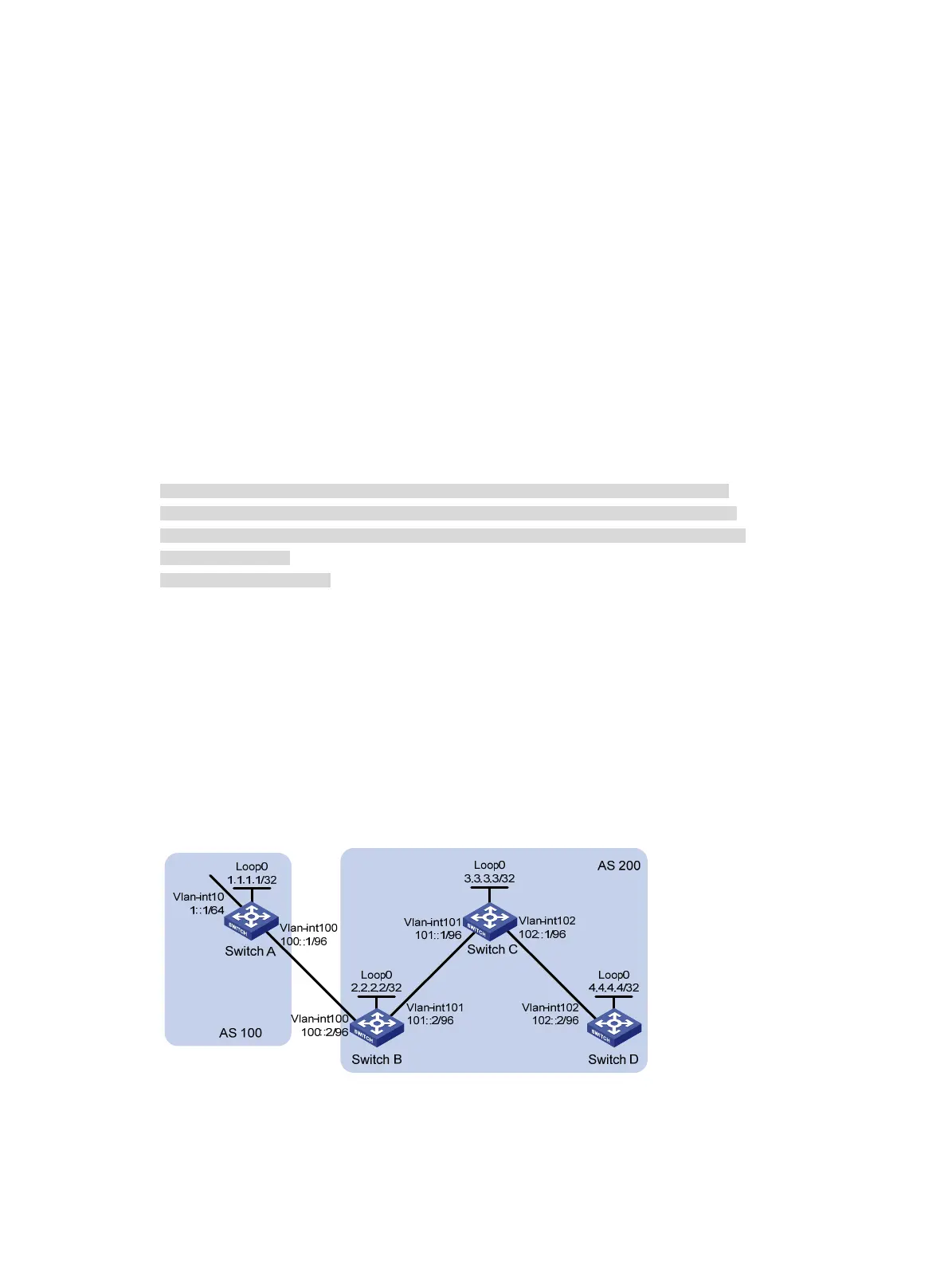293
NextHop : :: LocPrf :
PrefVal : 32768 OutLabel : NULL
MED : 0
Path/Ogn: i
* i Network : 9:: PrefixLen : 64
NextHop : 9::1 LocPrf : 100
PrefVal : 0 OutLabel : NULL
MED : 0
Path/Ogn: i
* >i Network : 10:: PrefixLen : 64
NextHop : 9::1 LocPrf : 100
PrefVal : 0 OutLabel : NULL
MED : 0
Path/Ogn: i
* >i Network : 50:: PrefixLen : 64
NextHop : 10::2 LocPrf : 100
PrefVal : 0 OutLabel : NULL
MED : 0
Path/Ogn: 65008i
The output shows that Switch C has learned the route 50::/64.
# Verify that Switch C can ping hosts on network 50::/64. (Details not shown.)
IPv6 BGP route reflector configuration example
Network requirements
As shown in Figure 75, run EBGP between Switch A and Switch B, run IBGP between Switch C and
Switch B, and between Switch C and Switch D.
Configure Switch C as a route reflector with clients Switch B and Switch D.
Figure 75 Network diagram
Configuration procedure
1. Configure IPv6 addresses for interfaces and IPv4 addresses for loopback interfaces. (Details
not shown.)

